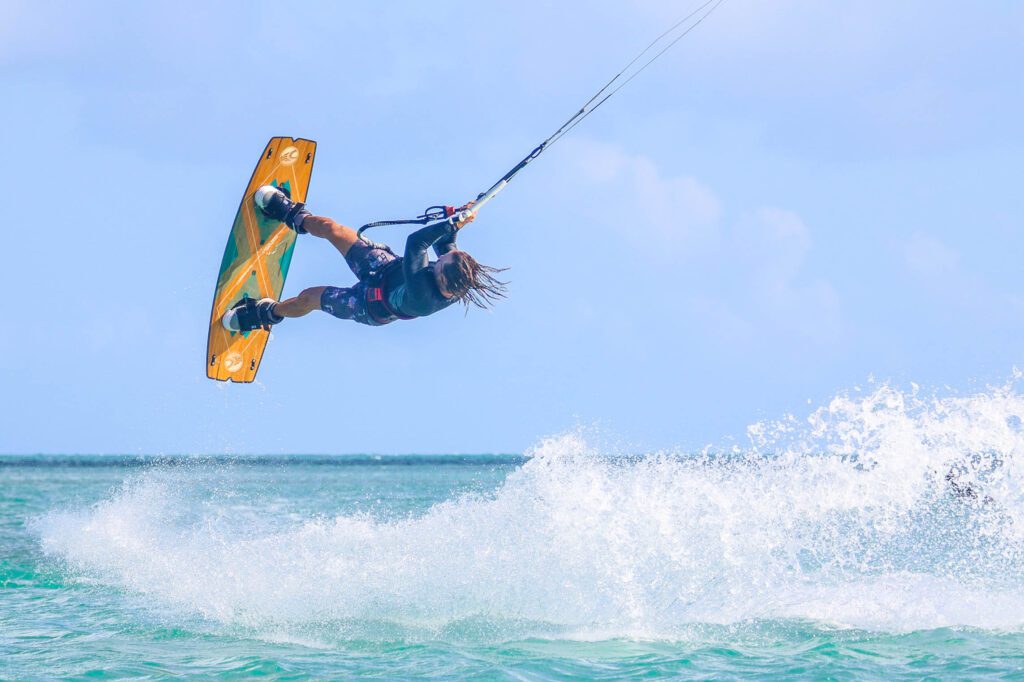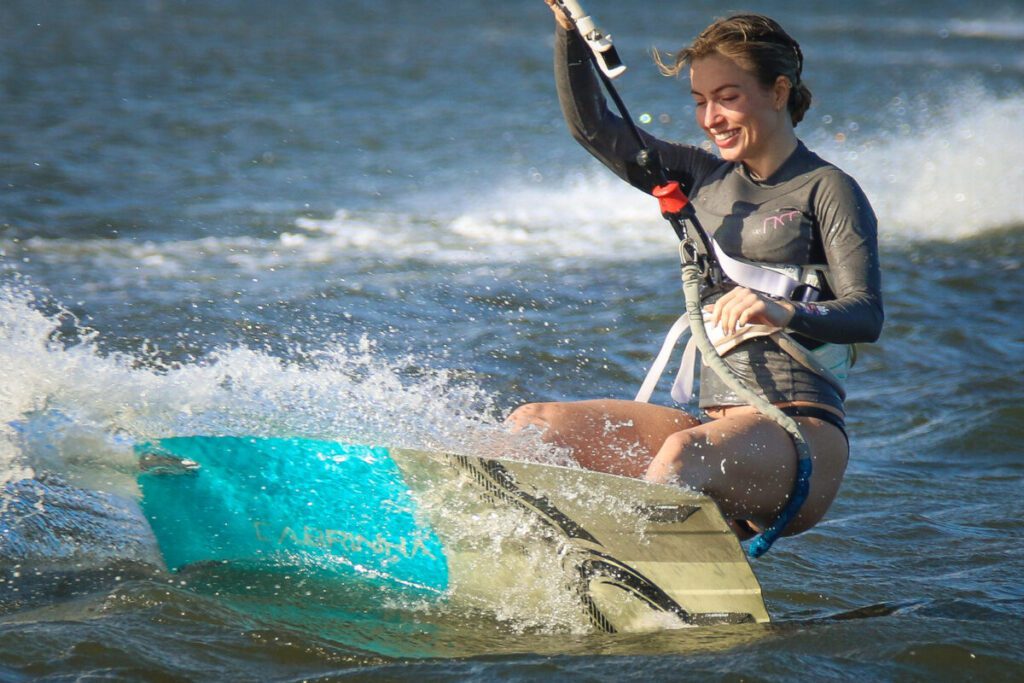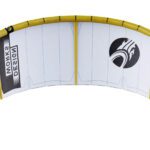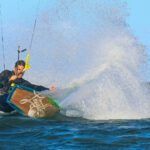
KITESURFING: Ready for an Exciting Moment.
Kitesurfing, also known as kiteboarding, is an exhilarating water sport that combines elements of surfing, windsurfing, and paragliding. It involves riding a board while being pulled by a kite, which the rider controls using a control bar. Kitesurfing provides a unique and thrilling experience as the rider can harness the power of the wind to perform high-speed maneuvers, jumps, and tricks. If you’re looking for an adrenaline-pumping adventure, kitesurfing might be your perfect activity!
What is kitesurfing?
Ready for an Exciting Moment: Kitesurfing is a surface water sport that originated in the late 1990s and has gained popularity worldwide. It involves using a large kite with a control bar and lines to generate power from the wind, which propels the rider across the water on a board. The rider uses their body and the control bar to steer the kite and control the speed and direction of the board. Kitesurfing can be done on various bodies of water, including oceans, lakes, and rivers, making it a versatile and exciting sport for water enthusiasts.
History of kitesurfing.
Kitesurfing has a fascinating history dating to the late 1970s when kite enthusiasts began experimenting with using kites for propulsion on the water. However, in the late 1990s, the modern kitesurfing we know today started to gain traction. Kitesurfing pioneers like the Legaignoux brothers and Cory Roeseler made significant advancements in kite design and safety systems, which paved the way for the growth of kitesurfing as a popular water sport in the world. Today, kitesurfing has evolved into a dynamic and thrilling activity that attracts adventure seekers from all walks of life.
Popular kitesurfing destinations.
Kitesurfing can be enjoyed in numerous locations worldwide, with some destinations offering ideal conditions for beginners while others are more suited for experienced riders. Some of the popular kitesurfing destinations include:
- Tarifa, Spain: Known as the “Kitesurfing Capital of Europe,” Tarifa offers consistent winds, warm waters, and stunning beaches, making it a haven for kitesurfers of all levels.
- Maui, Hawaii: With its steady trade winds, large waves, and beautiful scenery, Maui is a mecca for kitesurfing enthusiasts, especially those looking to challenge themselves with wave riding.
- Cabarete, Dominican Republic: Cabarete is known for its perfect combination of warm waters, steady winds, and flatwater lagoons, making it an excellent spot for beginners and intermediate riders.
Langebaan, South Africa: This destination offers diverse conditions, from flatwater to waves, making it suitable for all skill levels. Langebaan’s picturesque beaches and stunning landscapes also add to its appeal as a kitesurfing destination.

Safety measures for kitesurfing.
As with any extreme sport, safety is of paramount importance in kitesurfing. It is essential to follow proper safety measures to ensure a safe and enjoyable experience. Some of the critical safety tips for kitesurfing include:
- I am taking lessons from a certified kitesurfing instructor to learn the proper techniques and safety procedures.
- They constantly check the weather conditions, wind strength, and direction before heading out to ensure they are suitable for kitesurfing.
- You are using the appropriate size and type of kite for your skill level and the conditions.
- She was wearing a properly fitting harness, helmet, and impact vest for protection.
- I am avoiding kitesurfing alone and having a buddy system in place for assistance in case of emergencies.
- I am practicing self-rescue techniques and knowing how to release the kite in case of an emergency.
By following these safety measures, you can enjoy the thrill of kitesurfing while minimizing the risks associated with the sport.
Equipment and gear for kitesurfing.
Kitesurfing requires specialized equipment and gear to ensure a safe and enjoyable experience. The leading equipment used in kitesurfing includes:
- Kite: The kite is the most critical piece of equipment in kitesurfing. It comes in various sizes and styles, such as inflatable and foil kites. The type and size of the kite you choose depend on your skill level, wind conditions, and riding style.
- Control bar and lines: The control bar steers the kite and controls the power. It is connected to the kite with lines and features a control system that allows the rider to adjust the strength and direction of the kite.
- Board: The board is used for riding on the water’s surface. It can be a symmetrical twin-tip board, which allows for riding in both directions or a directional board, shaped like a surfboard and used for wave riding.
- Harness: The harness is worn around the waist or chest and attaches the rider to the control bar. It helps distribute the pulling force of the kite, reducing strain on the arms and allowing for longer riding sessions.
- Safety leash: The safety leash is attached to the rider’s harness and the kite. It is a safety backup if the rider needs to release the kite quickly in an emergency.
- Safety systems: Many modern kites come with safety systems such as quick-release mechanisms, which allow the rider to depower or release the kite in case of emergencies or to perform self-rescue.
- Wetsuit or rash guard: Depending on the water temperature, wearing a wetsuit or rash guard can protect against cold water, sunburn, and abrasions.
Investing in high-quality and adequately sized equipment is crucial for a safe and enjoyable kitesurfing experience.
Basic kitesurfing techniques.
Kitesurfing involves a series of techniques that riders need to master to ride safely and proficiently. Here are some of the basic kitesurfing techniques:
Body positioning.
Proper body positioning is crucial for maintaining balance and stability while riding the board. The rider must keep their body relaxed and upright, with their weight centered over the board. Leaning too far back or forward can result in losing balance and control.
Steering the kite.
Controlling the kite is one of the critical skills in kitesurfing. The rider uses the control bar to steer the kite left or right, which determines the direction of the ride. This involves pulling and pushing the control bar while maintaining proper body positioning.
Power control.
Managing the power of the kite is crucial in kitesurfing. The rider needs to learn how to control the kite’s power by adjusting the kite’s angle to the wind and sheeting in or out of the control bar. This allows for smooth acceleration or deceleration and maintaining control while riding.
Upwind riding.
Upwind riding is an essential technique in kitesurfing, as it allows the rider to ride against the wind and navigate in any direction. This involves using the kite’s power to propel oneself upwind while maintaining proper body positioning and board control.
Jumping.
Jumping is an exciting aspect of kitesurfing that allows riders to perform aerial tricks and maneuvers. This involves generating enough power in the kite, timing the jump, and controlling the landing to execute a smooth and controlled jump.
Wave riding.
For more advanced riders, wave riding adds another dimension to kitesurfing. This involves riding the waves using the kite’s power to navigate and perform maneuvers on the waves. It requires advanced kite control, board control, and lock reading skills.
Tips for mastering kitesurfing.
Mastering kitesurfing requires time, practice, and dedication. Here are some tips to help you improve your kitesurfing skills:
- Take lessons from a certified instructor: Proper guidance and instruction from a certified kitesurfing instructor can accelerate your learning process and help you master the techniques and safety measures.
- Practice kite control on land: Before hitting the water, practice kite control on the ground to understand the kite’s behavior and learn how to steer and control its power effectively.
- Start with a small kite: It’s best to start with a small kite that generates less energy and is easier to control, especially if you are a beginner. You can progress to more giant kites as you gain confidence and skills.
- Focus on body positioning: Proper positioning is crucial for balance and control. Pay attention to your body posture, weight distribution, and relaxed stance while riding.
- Learn to self-rescue: Self-rescue techniques are essential for emergencies. Practice self-rescue drills, including releasing the kite and using the safety systems, so you are prepared in case of any mishaps.
- Ride with experienced riders: Riding with more experienced riders can help you learn from their techniques and improve your skills. Observe and learn from their riding style, kite control, and maneuvers.
- Be patient and persistent: Kitesurfing can be challenging, and progress may be slow. Be patient and steady, and keep practicing to improve your skills gradually.
Conclusion.
- Kitesurfing is a thrilling water sport that offers an adrenaline rush. With the right equipment, proper techniques, and safety measures, kitesurfing can be a safe and enjoyable experience for riders of all skill levels. By mastering the basic techniques, practicing diligently, and taking lessons from certified instructors, you can become proficient in kitesurfing and enjoy the excitement and freedom of riding the waves with the wind as your ally.
Author
Latest entries
 WatersportsSeptember 16, 2024Cabrinha Moto X: Enjoy the Ride
WatersportsSeptember 16, 2024Cabrinha Moto X: Enjoy the Ride WatersportsMay 19, 2024Cabrinha 2024 Moto XL Review: The Ultimate Lightwind Kite
WatersportsMay 19, 2024Cabrinha 2024 Moto XL Review: The Ultimate Lightwind Kite WatersportsDecember 16, 2023Kiteboarding Travel
WatersportsDecember 16, 2023Kiteboarding Travel WatersportsDecember 14, 2023RED BULL KING OF THE AIR 2023
WatersportsDecember 14, 2023RED BULL KING OF THE AIR 2023




